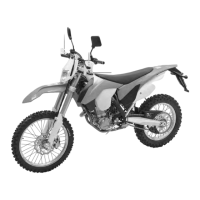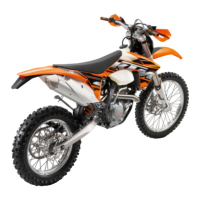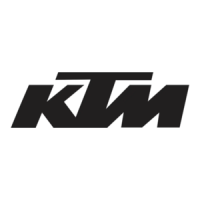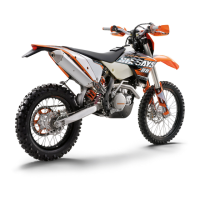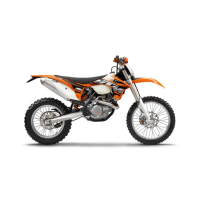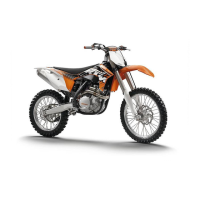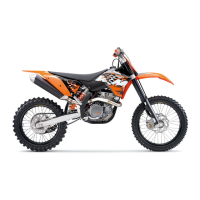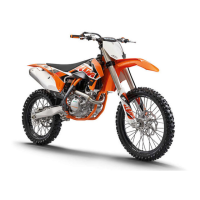Why is my KTM 450 EXC-R EU battery discharged?
- MMelissa MarshallSep 10, 2025
Your KTM Motorcycle battery may be discharged because the generator is not charging it. In this case, you should check the electrical system.
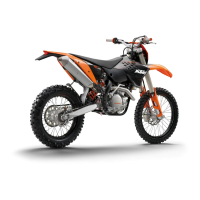
Why is my KTM 450 EXC-R EU battery discharged?
Your KTM Motorcycle battery may be discharged because the generator is not charging it. In this case, you should check the electrical system.
| Brand | KTM |
|---|---|
| Model | 450 EXC-R EU |
| Category | Motorcycle |
| Language | English |
Section for recording vehicle serial numbers and dealer's stamp.
Disclaimer regarding specifications and general advice.
Explanation of symbols and formats used in the manual.
Covers model usage, maintenance, warranty, and safety warnings.
Explains risk levels and stresses manual reading for safe operation.
Identifies locations for chassis, engine, key, and fork part numbers.
Describes clutch, brake levers, and engine kill/safety switches.
Details ignition, starter, and headlight controls for various models.
Describes flasher switches, indicator lamps, and horn operation.
Explains speedometer operation, modes, and functions.
Covers setting distance units, clock, and adjusting speedometer functions.
Details specific display modes like SPEED, LAP, ODO, TR1/TR2, A1/A2, S1/S2.
Explains fuel tap positions and filler cap access.
Explains choke operation for specific models.
Describes shift lever, gear positions, and foot brake pedal.
Describes kickstarter, side stand, and steering lock mechanisms.
Offers advice for first use, running-in, and basic handling.
Lists essential checks before each ride for safety and performance.
Details starting procedures and gear shifting techniques.
Offers advice and warnings on braking techniques and system checks.
Provides procedures for stopping, parking, and safe refueling.
Lists maintenance tasks for workshops and riders with intervals.
Introduces chassis and engine maintenance procedures.
Covers shock absorber and fork damping and preload adjustments.
Covers fork protection, steering head bearing, and fork offset.
Covers fork leg removal, triple clamp work, and fork protector.
Covers handlebar position adjustment and Bowden cable routing.
Covers chain cleaning, tension, wear, and sprocket checks.
Covers brake caliper, disc, fluid, lining, and lever checks/adjustments.
Steps for removing and fitting front and rear wheels.
Covers tire condition, air pressure, and spoke tension checks.
Covers battery removal, installation, recharging, and fuse replacement.
Covers fuel tank removal/installation and cooling system checks.
Covers air filter removal, installation, and cleaning.
Covers clutch lever adjustment and carburetor idle settings.
Covers oil level checks, changes, and filter servicing.
Addresses engine starting issues, power loss, overheating, and other faults.
Provides procedures for cleaning and storing the motorcycle.
Engine specifications, tightening torques, and carburetor details.
Chassis specs, tightening torques, fork, and shock absorber specifications.
Includes wiring diagrams for models and specifications for fluids/substances.
Details on fuel, brake fluid, coolant, engine oil, and fork oil.
Recommendations for lubricants, cleaners, and polishes.
Explanations of JASO and SAE standards.
Covers vehicle identification, pre-ride checks, safety defects, noise warranty, and consumer rights.
